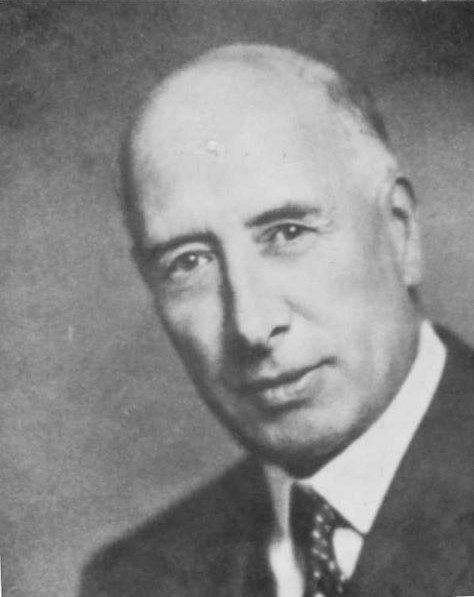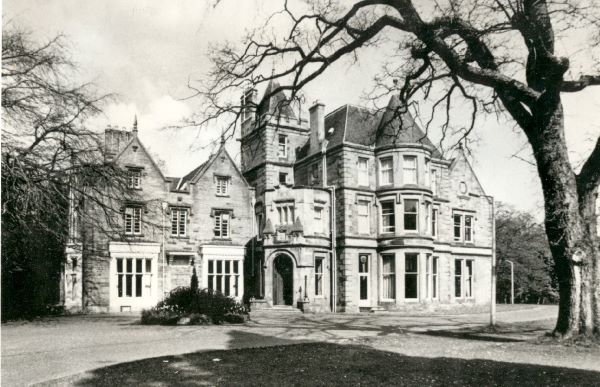

William Weir
William Weir
William Douglas Weir (1877-1959) was the son of James Weir, joint founder of G. & J. Weir & Co., the Cathcart engineering firm which went on to become Weir Pumps and then the Weir Group. He succeeded his father into the business but also served in wider roles both in government, politics and industry. From 1914, he made Eastwood House in Giffnock his family home.
William was educated at Allan Glen’s and Glasgow High School. After his formal education was complete, he entered the family firm as an apprentice. During this period he travelled widely in Europe and the United States and gained experience in all areas of the business. In 1902 he became managing director of Weir’s and in 1912 succeeded his father as chairman.
Weir had a strong interest in the emerging motor vehicle industry in the early years of the twentieth century, and was a founder member of the (Royal) Scottish Automobile Club. However following some unsuccessful ventures with motor cars and steam driven buses, by 1912, the company decided to halt its investment in this area of transport. More successfully, Weir’s continued to build up an exclusive business in auxiliary machinery, especially in relation to ships, as countries sought to improve their naval power. The company’s products and designs could be found in battleships from nations all across the globe.

During the First World War the firm was kept busy producing shells for bombs. In July 1915 William Weir resigned as managing director in order to join the Ministry of Munitions, with responsibility for the West of Scotland. His factory began to manufacture aeroplanes in 1917, as shell production was moved to Cardonald, and Weir’s became the largest Clydeside producers of military aircraft. At this time Weir moved to London to become Controller of Aeronautical Supplies in the Ministry of Munitions. Later that same year, he became Secretary of State for the RAF, was knighted in 1917 and in 1918 became Lord Weir. He also became a member of the Privy Council. However, when the war ended, he did not remain in office, choosing instead to return to the managing directorship of the company in Cathcart.
During the 1920s, Weir’s managed to survive an industrial slump, although the workforce fell considerably from its earlier peak of 3000. There were some attempts to diversify, including the production of industrialised housing and of Monel Metal alloy, which met with varying levels of success. However, as the 1930s progressed, the demand for Weir’s traditional marine products began to pick up again, and the works were kept busy once more. Nevertheless, it is to Weir’s credit that he managed to keep the business going through difficult trading conditions between the wars.
Throughout this period, Lord Weir also acted as an advisor to successive governments on matters pertaining to industry. Unsurprisingly his area of special interest was the production and use of aircraft. One of his major achievements was to secure a continued independent existence for the RAF in 1923. Another of his successes was to chair a committee, which saw the establishment of the national electricity grid, and there are many other examples of his involvement in trade and industry affairs. Towards the end of the 1930s, Weir became more involved in the preparations for war, acting as a special advisor at the Air Ministry from 1935-38. At the outbreak of the Second World War in 1939, Weir became director-general of explosives at the Ministry of Supply and Chairman of the Tank Board in 1942. In the coming years, Lord Weir would also hold directorial positions in companies such as ICI, Shell, Lloyds Bank and the National Bank of Scotland.

Despite his activities in London and Cathcart, Weir had a close connection with Eastwood House in Giffnock, having purchased it in 1914. It was to be his principal residence for the rest of his life. During his ownership there he entertained famous visitors including King George V and Queen Mary, whose royal train was parked at Whitecraigs Station during their stays. Prime Minister Stanley Baldwin, General Smuts, the Agha Khan, Laurel and Hardy and Sir Harry Lauder were all guests of the Weirs. The black and gold triple gate with six pillars, now the main entrance to Eastwood Park, was presented to Viscount Weir soon after 1945, in recognition of his contribution to the Second World War effort.
Throughout his career he was a very successful businessman and benefactor: for example, in 1943 he gifted £10,000 to the Victoria Infirmary in Glasgow. He received many honours in recognition of his work. In 1938 he became Viscount Weir of Eastwood and the Freedom of London was bestowed on him in 1957. He received the Order of the Crown of Italy, the American Distinguished Service Medal (DSM) and was a Commander of the Legion of Honour. Weir retired in 1954 and died on July 2, 1959.
Further Reading
Munn, Charles, W, William Douglas Weir, in Dictionary of Scottish Business Biography, Volume 1, Aberdeen University Press, 1990
Blair, Anna, Old Giffnock, Stenlake, 2003
Cormack, Ian, L, M.A. Old Eastwood: Giffnock, Clarkston and Thornliebank Ian L. Cormack M.A., 1980
Sandstone to Suburbia: a History of Giffnock, Eastwood District Libraries, 1988
Papers of William Douglas Weir, 1877-1959, 1st Viscount Weir of Eastwood, industrialist and public servant, Giffnock, Scotland, University of Glasgow Archive & Special Collections
